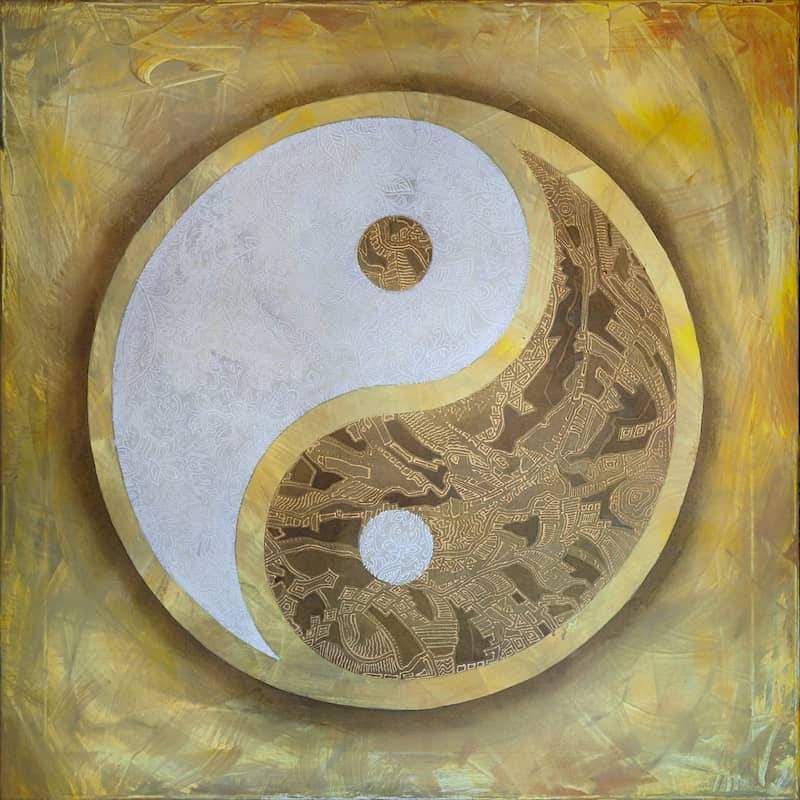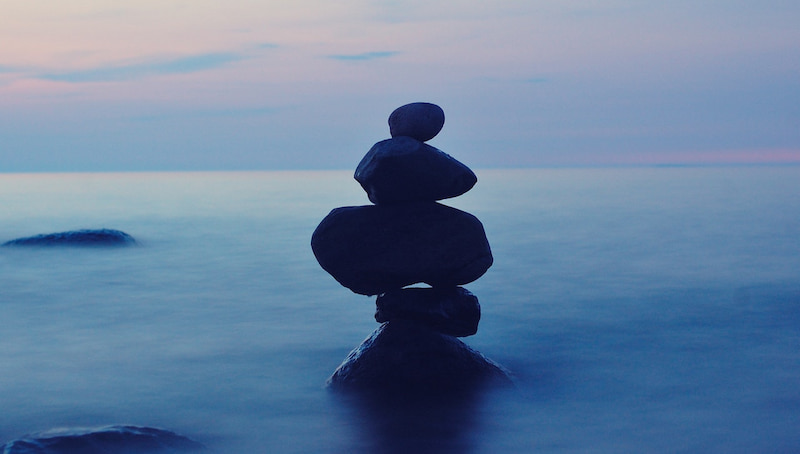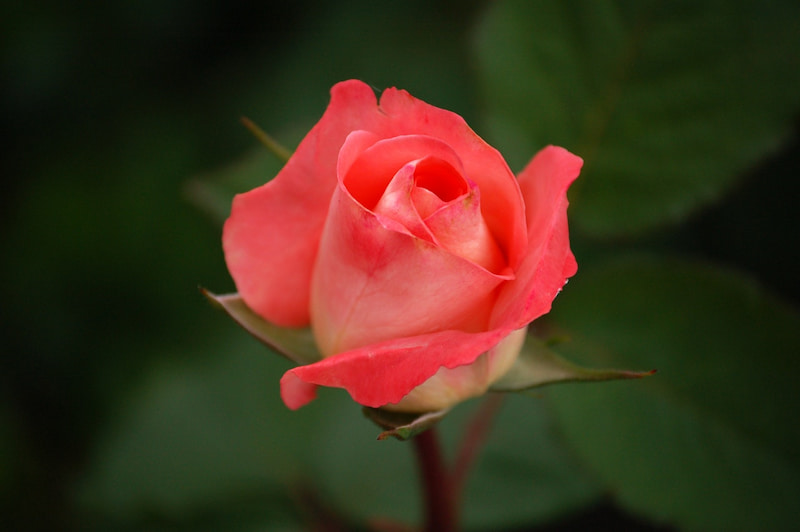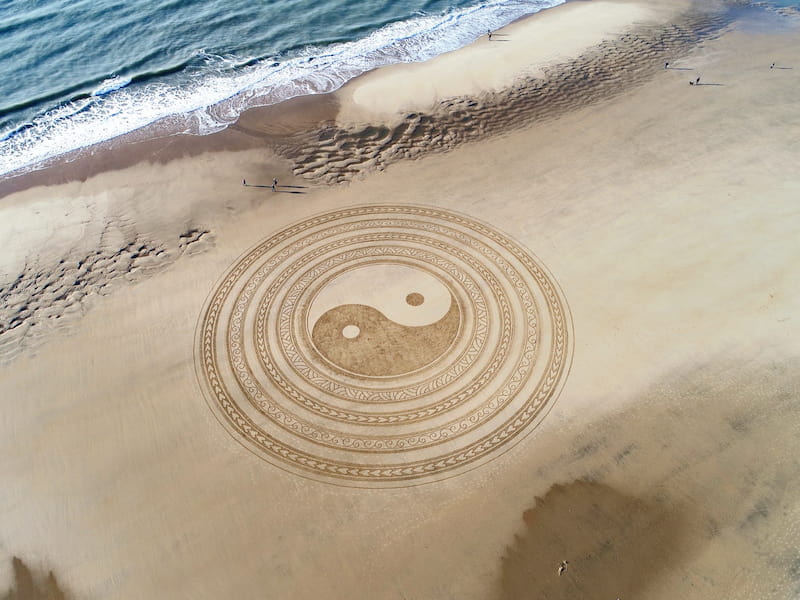Guest writer for Wake Up World
“To have no thought and put forth no effort is the first step towards understanding the Tao. To go nowhere and do nothing is the first step towards finding peace in the Tao. To start from no point and follow no road is the first step towards reaching the Tao.”
— Chuang Tzu
If there is one book that has survived the vicissitude of my moods and preferences, and has remained beside my bedside more than any other … it is the Tao Te Ching.
[pro_ad_display_adzone id=”110028″]
While small and fragile looking in appearance, the Tao Te Ching, a book authored by 6th century mystic and sage Lao Tzu, is quite the opposite.
Here we have a mighty book of perennial, undying, simple yet profound, paradoxical, and distilled wisdom that feels like it was forged in the bowels of an ancient mountain.
Do you need to be a Taoist to appreciate the tremendous beauty of the Tao Te Ching? Absolutely not.
In fact, the Tao is so wild and free that it declares, in the very first sentence, “A way that can be walked is not The Way.” To truly have an embodied understanding of the Tao, we need to loosen and discard of all preconceived labels, ideas, and definitions.
In true Taoist style, I won’t try too hard to go into intense cerebral detail about the Tao in this article. Instead, I’ll keep it simple so that, hopefully, you walk away with something that has touched you on a meaningful, deep level.
What is the Tao?

“The Tao” (pronounced: dow) literally translates to “The Way” and is at the heart of the Tao Te Ching and Taoism as a whole. In the first verse of the Tao Te Ching, Lao Tzu describes the Tao in the following way:
Tao is both Named and Nameless
As Nameless, it is the origin of all things
As Named, it is the mother of all things
Such a paradoxical description of the Tao brings to mind the Hindu notion of Atman/Brahman, the Abrahamic religion’s notion of Soul/Spirit, the Buddhist notion of Buddha Nature or Nirvana, and the modern spiritual notion of True Nature.
7 Crucial Spiritual Lessons of the Tao Te Ching

As one of the deepest and oldest spiritual teachings out there, there is so much to learn from the Tao Te Ching. In fact, you could spend your whole life studying it, and still, there would be more to learn – that is the magical dynamism of this spiritual philosophy!
As such, the lessons below are by no means absolute or complete – they are simply the most obvious (in my opinion and study) and also the most beneficial for our Ensoulment as humans:
1. Everything has its yin and yang

All throughout the Tao Te Ching we read about the interplay of opposites. In fact, the whole of this philosophy is really about non-duality: or the innate Oneness of everything.
In other words, every person, event, situation, object, and experience in life has a light and dark side. There is expansion and contraction, male and female, love and fear, inside and outside, up and down, good and bad.
As the Tao Te Ching says in verse 58:
Bad fortune, yes––
it rests upon good fortune
Good fortune, yes––
It hides within bad fortune
Despite the apparent duality of opposites in life, they actually combine and require each other’s presence to exist. In this sense, the Tao Te Ching teaches us about the need to embrace all parts of life.
This is what verse 42 says about the dance of non-duality and duality:
The Tao gave birth to One.
The One gave birth to Two.
The Two gave birth to Three.
The Three gave birth to all of creation.
All things carry Yin
yet embrace Yang.
They blend their life breaths
in order to produce harmony.
And in verse 2 Lao Tzu writes:
Life and death are born together
Difficult and easy
Long and short
High and low––
all these exist together
Sound and silence blend as one
Before and after arrive as one
Truly understanding the dance of opposites is a deep form of spiritual integration and is what makes healing practices such as shadow work so powerful.
2. Finding balance is essential

If there is one word that could define the teachings of the Tao Te Ching, it would perhaps be ‘balance.’
The Tao, or The Way, is the path of the centre, the essence of balance, and if you follow it, your life will be peaceful and harmonious.
If you look at the laws of nature, you will see that they’re all about balance.
Draw out a pendulum forty degrees to the left and it will go forty degrees to the right – but it will eventually settle in the centre. Blend hot and cold water together and you get warm water, the most pleasant for the human body. Eat too much or too little and you get sick, but eat balanced and you feel good. Too much heat will burn the planet, too little heat will create ice – you need a balance of fire and water to have a lush landscape.
As verse 9 of the Tao Te Ching says:
Sharpen a blade too much
and its edge will soon be lost
Fill a house with gold and jade
and no one can protect it
Puff yourself with honor and pride
and no one can save you from a fall
Balance, in all areas of life, is crucial for a life well-lived.
3. Wu wei (effortless action) brings happiness, success, and inner peace

Once you recognize the interplay of opposites inherent in all of existence (including within you) and find the path of balance, you experience what is known in Taoism as wu wei or effortless action.
It takes a lot of effort to hold extremes. For example, too much pushing to “work hard and do it all” creates burnout and a poor quality of life. Too little work creates laziness and lack of progress. Both extremes lead you to failure. A balance of work and rest creates a happy person who is in alignment with the Tao and experiences more moments of flow (or wu wei).
For an internal example, too much rejection of an unhealthy quality within you tends to make that quality to enlarge or intensify, aka. “What you resist, persists” (resulting in anxiety and depression). Too much acceptance of that quality can result in fragile sentimentality, or worse, narcissism. Learning to find balance and neither reject too much or accept too much such a quality (essentially non-attachment) leads to more inner peace.
When we let go of extremes, we find an inner harmony that makes everything we do easier (like a pendulum returning back to center).
As the Tao Te Ching says in verse 77:
The Sage gives
without relying on his own effort
He completes
without waiting for reward
He illumines
without stepping from the shadow
And in verse 63:
Act without acting
Give without givine
Taste without tasting …
Let Tao become all your actions
then your wants will become your treasure
your injury will become your blessing
One of the most direct ways to wu wei is through non-attachment.
4. Non-attachment leads to balance and wu wei

In the words of philosopher Chuang Tzu (369–298 B.C.E.), a prominent figure in Taoist philosophy,
The perfect man employs his mind as a mirror. It grasps nothing, refuses nothing. It receives but does not keep.
These words reflect much of what the Tao Te Ching has to say about the nature of non-attachment.
When we’re non-attached, we’re not disconnected or somehow “above” our thoughts and feelings. Instead, we simply see that they’re impersonal: they’re movements of energy that rise and fall, come and go – the yin and yang of life.
As such, we can approach life in a lighthearted way that doesn’t cling or grasp onto that which would otherwise create suffering.
In the words of the Tao Te Ching,
“Surrender brings perfection”
The crooked become straight
The empty become full
The worn become new
Have little and gain much
Have much and be confused
So the Sage embraces the One
and becomes a model for the world
Without showing himself, he shines forth
Without promoting himself, he is distinguished
Without claiming reward, he gains endless merit
Without seeking glory, his glory endures
5. The three most valuable qualities: love, moderation, humility

What amazes me about these three qualities that the Tao Te Ching celebrates is that they run pretty much counter to our culture’s values (aka. shame-culture, excessive consumption, and narcissistic self-inflation).
As Lao Tzu writes in verse 67:
I have three treasures that I love and hold dear
the first is love
the second is moderation
the third is humility
With love one is fearless
With moderation one is abundant
With humility one can fill the highest position
Now if one is fearless but has no love
abundant but has no moderation
rises up but has no humility
Surely he is doomed
Over and over again within the Tao Te Ching, the power and virtue of these qualities are exalted. Here we have a crystallized, immediate, and direct way to practice the Tao: by cultivating love, moderation, and humility.
Certainly, such qualities might not be “trendy” or even desirable in the mainstream world of egocentrism, but they are – according to this ancient wisdom text – vital for our joy, abundance, and fulfillment.
6. Be yielding like water

In a sublime “f*ck you” (okay, maybe that’s a little crass!) to cultural values of being “tough” and “strong,” the Tao Te Ching actually celebrates the value of being soft, receptive, and yielding.
Three (of many) passages that highlight this are verse 40:
The movement of Tao is to return
The way of Tao is to yield
… verse 43:
The most yielding thing in the world
will overcome the most rigid
The most empty thing in the world
will overcome the most full
… and verse 8
The best way to live
is to be like water
For water benefits all things
and goes against none of them
It provides for all people
and even cleanses those places
a man is loath to go
In this way it is just like Tao
Building on the idea of love and humility, yielding can be thought of as the path to generating these qualities. When we’re tough and rigid in thought or deed, the flow of Tao can’t enter us: our hearts become closed and we get locked into patterns of mental suffering.
Yielding (or allowing, surrendering, or giving way to life), helps to open us up to compassion, honesty, forgiveness, and other beautiful qualities of the Soul that this world is so in need of.
7. Practice stillness, emptiness, and seeking your treasure within

While the word “meditation” is never explicitly mentioned in the Tao Te Ching, the practice of meditation itself – that is, stilling or emptying the mind – is poetically yet practically discussed all throughout this sacred text.
Take chapter 16 for example, where Lao Tzu writes:
Become totally empty
Quiet the restlessness of the mind
Only then will you witness everything
unfolding from emptiness …
Be still
Stillness reveals the secrets of eternity
Eternity embraces the all-possible
The all-possible leads to a vision of oneness
A vision of oneness brings about universal love
Universal love supports the great truth of Nature
The great truth of Nature is Tao
This verse is perhaps one of my favorites in the whole of the Tao Te Ching simply due to how rhythmically it flows with truth, wisdom, and beauty.
Later on, in verse 26, Lao Tzu writes in a similar rhythmic pattern:
One who seeks his treasure in the outer world
is cut off from his own roots
Without roots, he becomes restless
Being restless, his mind is weak
And with a mind such as this
he loses all command below Heaven
The message here is quite clear: everything you are searching for is found within you. By practicing silence, stillness, and the emptying of your mind and self, you will realize what you already and always have: the Tao.
To go back to verse 1:
A mind free of thought,
merged within itself,
beholds the essence of Tao
A mind filled with thought,
identified with its own perceptions
beholds the mere forms of this world
Further Reading and My Favorite Translation

If you’d love to go a little deeper into Taoist wisdom (which is really quite universal and can be valuable to anyone of any faith persuasion), here are my recommended resources:
- Tao Te Ching translated by Jonathan Star (my favorite translation and the one I’ve used to quote most of this article)
- The Tao of Pooh by Benjamin Hoff – sweet, creative, and a lovely read
- Tao: The Watercourse Way by Alan Watts
- 365 Tao Daily Meditations by Ming-Dao Deng
The above books I either own, have read in part or full, or have listened to. (I also gain a small commission, at no extra cost to you, if you choose to purchase any of these. Thanks if you do!)
***
There is a beautiful simplicity and directness at the heart of the Tao Te Ching which I think is rare in this wordy age where a lot is said about nothing much at all.
I truly hope you’ve benefited from this article, and if you have or would like to share some of your thoughts/perceptions about the Tao, I’d love to hear them below.
About the author:
Aletheia Luna is a prolific psychospiritual writer, author, and spiritual mentor whose work has touched the lives of millions worldwide. As a survivor of fundamentalist religious abuse, her mission is to help others find love, strength, and inner light in even the darkest places. She is the author of hundreds of popular articles, as well as numerous books and journals on the topics of Self-Love, Spiritual Awakening, and more. See more of her work at lonerwolf.com.
This article, The Tao: 7 Crucial Lessons From A Radically Wise Philosophy, was originally published on lonerwolf.com, reproduced with permission.
[pro_ad_display_adzone id=”110027″]








